On Ré Island, salt farmers are called ‘sauniers’. The salt harvest takes place in summer, but is the culmination of a year of work punctuated by ocean tides, climate and seasons.
Seasons of the Marais
SPRING
Preparation of the salt marsh
Salt marsh restoration: cleaning of mud-filled basins and the start-up of the water circuit.
Tool: boguette, rouable.
Around the month of February, the salt farmers gradually empty the basins of the marsh. By following the water circuit, they clean the basins, one by one, from the ‘vives’ (first areas of evaporation) to the ‘aires saunantes’ (salt harvesting areas).
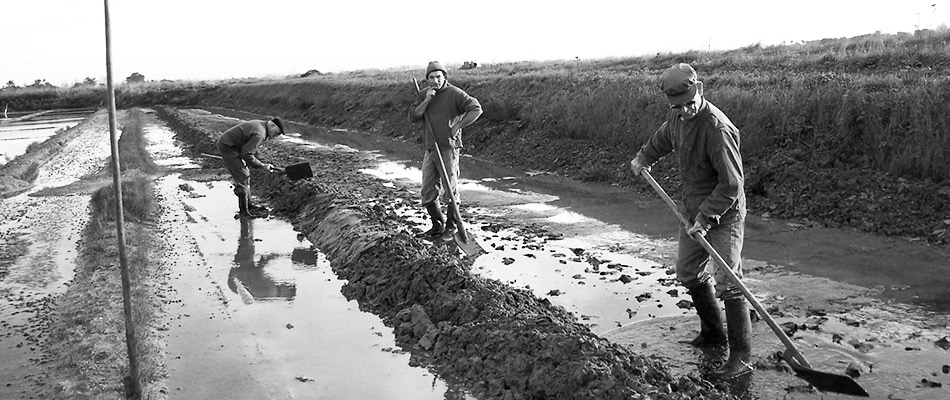
To clean a basin, they start by removing the mud that has accumulated over the winter on the clay beds. It is this mud that salt farmers will use to reshape the clay paths that have deteriorated, using a technique known as greasing. All this work is done by hand, using traditional tools such as the boguette, the rouable and the greasing lousse. Once a basin is cleaned and its paths greased, the salt farmers let them dry out. This operation can take from a few days to several weeks, depending on weather conditions and the method specific to each salt farmer.
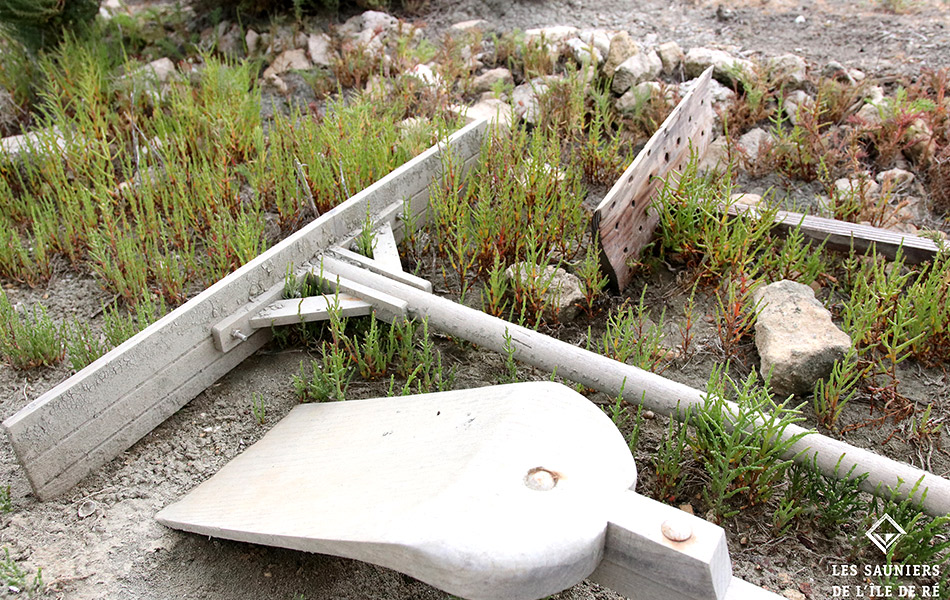
© 2017 - L'Encre Invisible
Meanwhile, the seawater has already begun its circuit and is starting to produce the first salt.
SUMMER
The harvest
Harvesting of salt: Every two days: arvest of Coarse Sea Salt. At the end of the day: Collecting the Fleur de Sel.
Tool: simoussi, souvron, lousse.
From the month of June and often until September, the days are exclusively reserved for the harvest of the Coarse Sea Salt and the collecting of the Fleur de Sel.
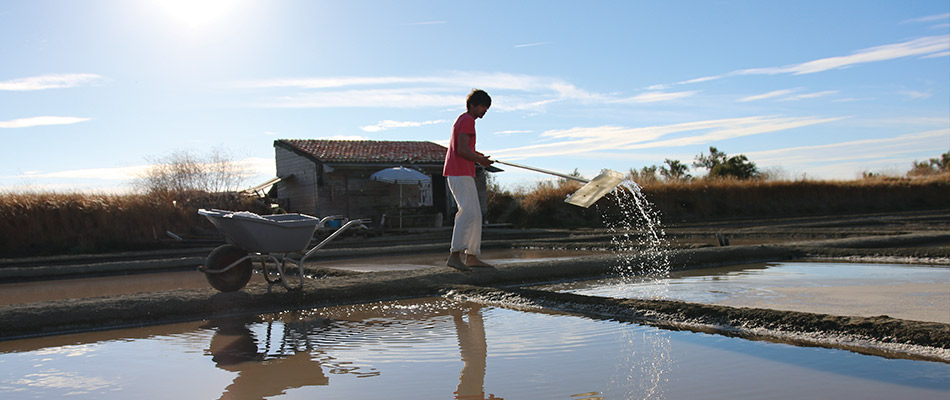 © 2017 - L'Encre Invisible
© 2017 - L'Encre Invisible
Both occur in the aires saunantes, but at different times and using different techniques. The Fleur de Sel is collected at the surface of the water with the lousse the late afternoon. For harvesting the Coarse Sea Salt, which is harvested in the morning or in the evening, they use a simoussi to gather it in the water and a souvron to raise the salt onto the edge and thus form small pyramids of salt.
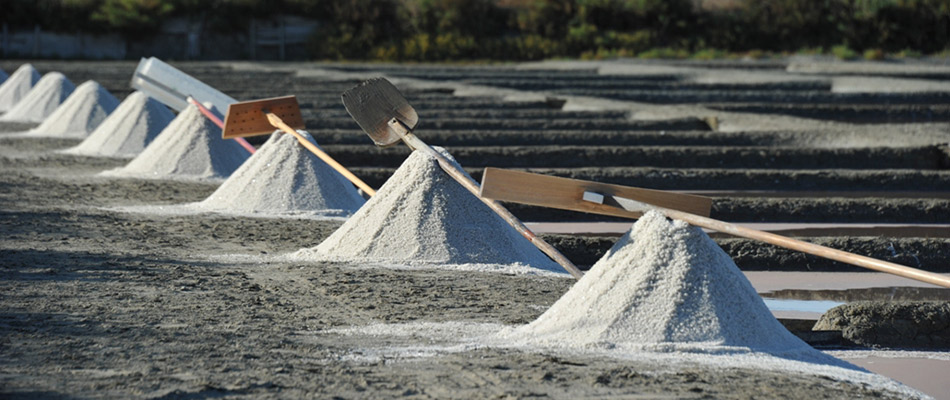 © 2017 - L'Encre Invisible
© 2017 - L'Encre Invisible
Throughout the summer, the Coarse Sea Salt harvest is gathered on the banks of the salt marsh. The Fleur de Sel is harvested and stored throughout the season at the Cooperative.
AUTUMN
The charroi: the Coarse Sea Salt is collected from the salt marshes and stored at the Cooperative.
Maintenance of the salt marshes and tools.
Tool: boguette, ferrée, pelle charentaise.
In September, all the salt farmers of the Cooperative organize themselves as a team to bring their salt back to the Cooperative. This time is known as the charroi. Their tractors and trailers are put to common use and they go to each of the salt farmers to collect the salt and bring it to the Cooperative. The charroi marks an important time in the salt farming activity: once the salt is delivered to the Cooperative, it is synonymous of a well deserved rest and represents a moment of conviviality.
 © 2017 - L'Encre Invisible
© 2017 - L'Encre Invisible
WINTER
Rest period for the salt farmer and maintenance work in the marshes.
Resting time for the salt farmer: the salt marsh is "drowned" under a layer of seawater that will protect it from frost and bad weather until the following spring.
Winter is the rest period for salt farmers but especially for the salt marshes, which spend several months covered with seawater (to protect them from bad weather). However, some of the salt farmers take advantage of the winter to continue the restoration of their salt marsh. When a young salt farmer takes over an unexploited salt marsh, restoration work is necessary and it can take several winters. It is necessary to level out the bottom of the basins by removing a thick layer of clay (the "décabossage") and to rebuild all the small walls of clay. For this, they use a tool known as a boguette. Collective restoration projects are organized. On these occasions, several generations of professional salt farmers rub shoulders, thus promoting the transmission of traditional know-how, so important in the profession of salt farming.
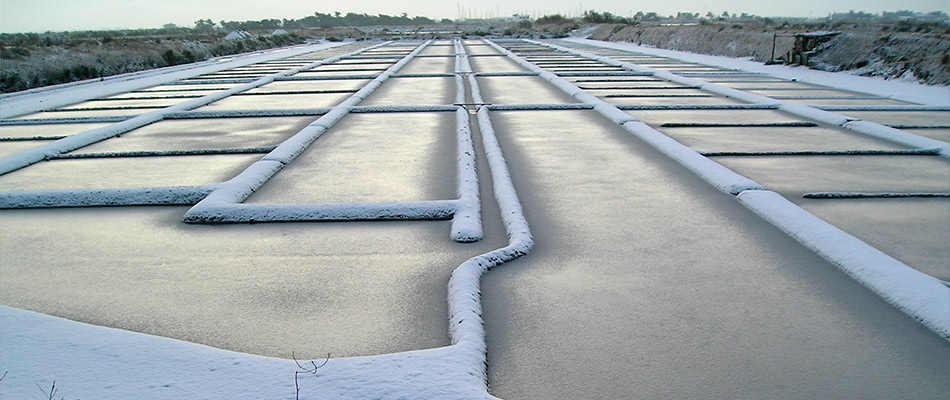
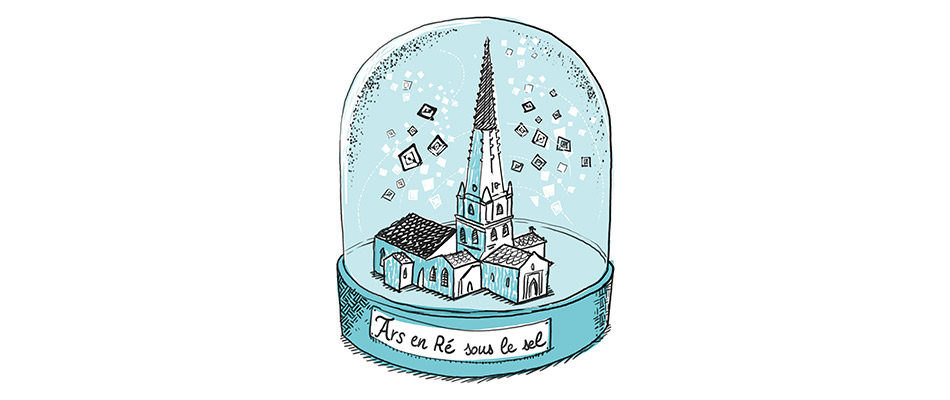 © 2017 - L'Encre Invisible
© 2017 - L'Encre Invisible
